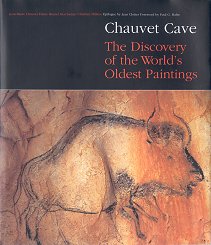They had just made one of the most thrilling discoveries of modern times. Here, in this hidden network of caverns and passageways, was a staggering collection of some three hundred wall paintings dating back 30,000 years. The paintings are the oldest examples of prehistoric art ever found – some 15,000 years older than the renowned paintings at Lascaux. The cave had remained undisturbed for so long that the very footprints on the sandy floor were those of Stone Age man.
This book recounts the story of this extraordinary discovery, putting into words the emotions of Jean-Marie Chauvet, Eliette Brunel Deschamps and Christian Hillaire as the significance of their find became clear and allowing us to share their sense of wonder and excitement. The remarkable photographs of the paintings show each wall in clear detail, revealing the incredible mastery of the prehistoric artists. The images are particularly impressive in terms of the techniques used to present perspective and motion. Many figures interact with each other; some are staggered to give perspective; others are drawn on bulges in the cave walls, to further suggest depth. The prehistoric art specialists Paul G. Bahn and Jean Clottes provide a fascinating analysis of the paintings, setting them in their historical context.
